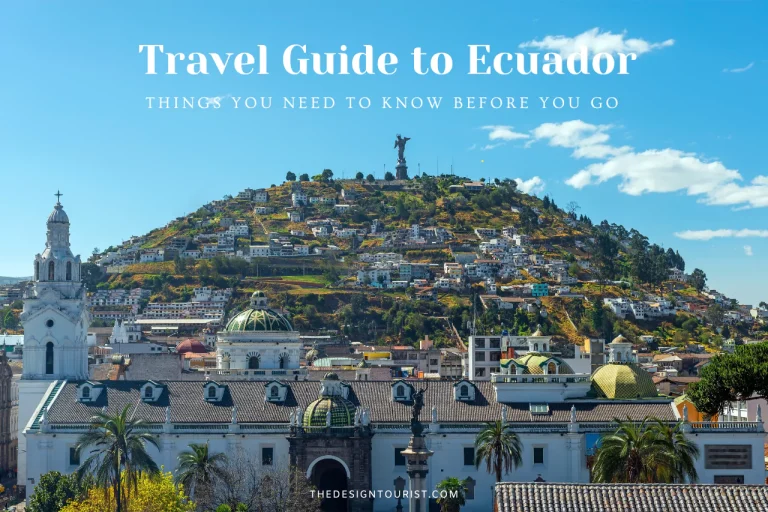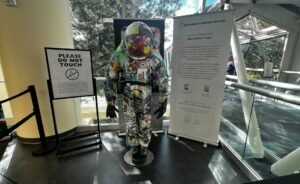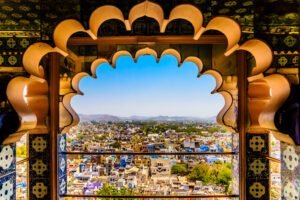This post may contain affiliate links, which means I may earn a small commission from purchased products at no additional cost to you. See my full disclosure here.
Ecuador may be small, but it packs an incredible diversity of experiences – from the Amazon jungle and Andean peaks to colonial cities and the legendary Galápagos Islands. If you’re planning a trip, there are many things to know before going to Ecuador. This comprehensive travel guide to ecuador will walk you through general travel tips (entry requirements, currency, weather, transportation, safety), offer cultural insights (indigenous culture, art, traditions, and cuisine), highlight top natural and historical attractions, and suggest unique experiences you shouldn’t miss for an unforgettable Ecuadorian adventure!

Table of Contents
General Travel Tips for Ecuador
Before packing your bags and heading off to explore Ecuador, it’s important to understand the entry requirements and necessary documentation. Here’s a quick overview of what you’ll need to enter the country smoothly:
Visa and Passport Information
For most tourists, visiting Ecuador is straightforward. Citizens of the US, Canada, EU, UK, Australia, and many other countries do not need a visa for stays up to 90 days. You’ll receive a T-3 tourist stamp on arrival.
- Ensure your passport is valid for at least 6 months beyond your stay (a common requirement).
- Have a return or onward ticket.
- If you plan to stay longer than 90 days in a 12-month period, you’ll need to apply for an extension or a visa in advance.
On arrival, you may be asked to show proof of travel health insurance (though this is not always enforced, it’s wise to have insurance).
Special Requirements for Land Borders
Important: If you enter Ecuador by land from Colombia or Peru, authorities might require you to show a recent criminal record check – this rule is aimed at overland travelers, so check the latest requirements if you plan to cross borders by bus.
Arriving by Air
For most fly-in tourists, entry is hassle-free.
- Just fill out the migration form given on the plane.
- Clear immigration.
- Get your passport stamped.
Galápagos Islands Entry
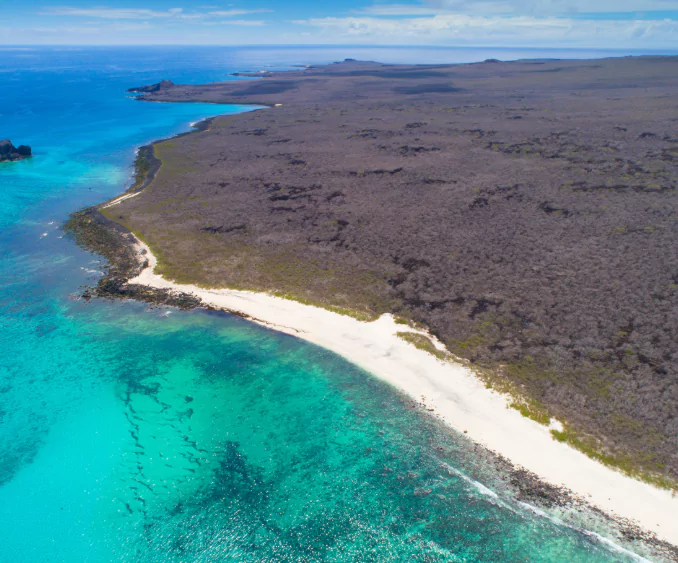
The Galápagos Islands have an additional control: if heading there, you must:
- Pay a Galápagos National Park entry fee (usually $100) upon landing in the islands – something to budget and plan for.
- Obtain a Transit Control Card (Ingala card) for $20 at the airport.
Currency, Money & Tipping in Ecuador
One surprise for many first-timers: Ecuador’s official currency is the US dollar. Ecuador switched to the dollar in 2000, so prices are in USD. U.S. bills (especially smaller denominations) are used everywhere, and Ecuador mints its own coins (centavos) that are equal in value to US cents.
- Always carry some small bills and coins – many small shops, markets, and taxi drivers either can’t break large $50/$100 bills or prefer not to.
- Credit cards are accepted at mid-range and higher-end businesses (hotels, nicer restaurants, tour agencies), but smaller vendors are cash-only.
- ATMs are found in all cities and larger towns; they dispense USD.
- Be cautious when withdrawing money – use ATMs inside banks or malls when possible, and guard your PIN.
Tipping
Tipping isn’t as mandatory as in some countries, but it’s appreciated for good service.
- Restaurants in tourist areas often add a 10% service charge to the bill; if not, a 10% tip is a good rule of thumb for table service.
- For guides on tours, tip around $5 per day per person (or more if it’s a private/small tour).
- Hotel porters might get $1 per bag, and housekeeping a couple dollars per night.
- Taxi drivers do not expect tips, but you can round up the fare for convenience.
In markets, bargaining is common for crafts and souvenirs – do so politely and with a smile, and remember a small amount means more to the vendor than to you.
Language and Communication in Ecuador
Spanish is the official language of Ecuador and by far the most commonly spoken. Indigenous languages like Kichwa (Quechua) are also spoken among native communities (especially in the highlands and Amazon), but you’ll rarely hear them in city life.
English Usage
English is not widely spoken outside of major tourist-oriented places and some hotels. In Quito, Cuenca, or Galápagos cruises you’ll find guides and staff who speak English, but in local restaurants, markets, and rural areas, basic Spanish will go a long way. It’s worth learning a few simple phrases:
- Greetings
- Thank you (“gracias”)
- How much (“¿cuánto cuesta?”), etc.
Ecuadorians are generally warm and patient, and attempting Spanish – even just saying buenos días (good morning) or buenas tardes (good afternoon) when greeting locals – will be appreciated. In fact, locals often greet strangers in passing; a friendly greeting and smile is part of good manners.
Phone and Internet Access
For phone and internet, you can buy a local SIM card (from Claro or Movistar) cheaply at airports or shops:
- Coverage is decent in cities and along main roads, though remote areas (deep Amazon or high mountains) will have spotty signal.
- Wi-Fi is common in hotels and cafes in cities.
Weather and Best Time to Visit Ecuador
Because of its location on the equator, Ecuador doesn’t have four distinct seasons like temperate countries. Instead, the climate varies by region: coast, highlands, Amazon, and Galápagos each have their own patterns. Generally, there are two seasons – rainy and dry – but those mean different things in each region.
Coastal Region Climate
The coast (and Guayaquil) is hot and can be humid, with a rainy season roughly December to May (when it’s hotter and sunnier with afternoon rains) and a drier, slightly cooler season June to November (often overcast but with less rain).
Amazon Rainforest Climate
The Amazon rainforest is, unsurprisingly, wet and warm year-round; it rains often, but December to May are the wettest months to avoid if possible.
Andes Highlands Climate (Quito, Cuenca, Otavalo)
In the Andes highlands (Quito, Cuenca, Otavalo, etc.), temperatures are spring-like year-round, but it can get quite cool at night due to altitude. The highlands have a wet season roughly October to April (with heaviest rains in April) and a dry season from June to September. Even in the dry months, you might get an afternoon shower, and even in wet months you’ll have sunny mornings – the weather can be unpredictable.
- Layered clothing is key for highland travel, as you might be chilly in the morning, warm at midday, and cold at night.
Best Times to Visit by Region
So, when is the best time to go to ecuador? It depends on your destinations.
- Quito and Highlands: The dry season (June–September) is popular for clear skies and festivals. In fact, the best time to visit Quito, Ecuador is often during these months when rainfall is lowest and you can enjoy outdoor events – this detailed guide covers Quito’s weather and festivities throughout the year. If you plan on hiking in the Andes or visiting places like Cotopaxi, aim for those drier months (or the short dry season around December).
- Galápagos Islands: Wildlife is amazing year-round, but there are slight differences: June–November has cooler water and air temps (better for active animals like penguins, though water can be chilly for snorkeling), while December–May is warmer (good for ocean swimming and certain animal mating seasons).
- Amazon Region: Drier months (August–November) can be preferable for trail hiking (and fewer mosquitoes), but even in rainier times you’ll simply be dealing with afternoon showers.
The bottom line: there’s no bad time to visit Ecuador, but plan according to the regions on your itinerary.
Festivals and Events
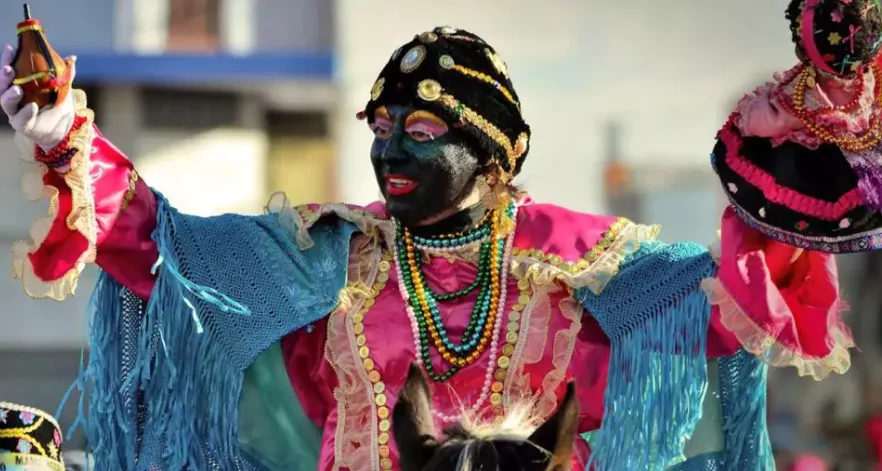
Also consider festival times:
- Early December in Quito has Fiesta de Quito celebrations (with city-wide parties around December 6th).
- Late February or early March is Carnival (coastal towns can be lively then).
- June features many indigenous festivals (more on that later).
Whenever you go, pack layers and rain gear, and don’t forget sunscreen – the sun is strong year-round due to the equatorial UV intensity, even when it’s cool or overcast.
Transportation: Getting Around Ecuador
Traveling within Ecuador is an adventure of its own, and there are several ways to get around.
Domestic Flights
Domestic flights are the quickest way to cover long distances. Given the country’s geography, you may want to fly on certain routes – for example, Quito to Galápagos (a must, as the islands are 600 miles offshore), or Quito to Cuenca (a 45-minute flight versus a 10-hour bus ride). Airlines like LATAM, Avianca, and Equair serve major city routes. Prices are reasonable if booked in advance.
Buses
Buses, however, are the most common form of travel for locals and budget travelers. Ecuador has an extensive network of intercity buses that are very affordable (just a few dollars for a couple hours’ ride). You can essentially reach every town by bus.
- The main hubs are the bus terminals in cities: Quito has two big terminals (Carcelén in the north and Quitumbe in the south), Guayaquil’s Terminal Terrestre is modern and huge, etc.
- Buses range from modern coaches to basic older buses.
- It’s a scenic way to see the countryside, but be prepared for winding mountain roads if you’re in the highlands (motion sickness meds if you need them).
Safety-wise, bus accidents do occur due to rough roads or reckless drivers, and petty theft can happen – keep your belongings on your lap or guarded (don’t put valuables in overhead or under-seat where you can’t see them). For overnight buses, use reputable companies and consider a money belt for peace of mind. In recent years, some travelers and embassies have advised caution with night buses in certain areas due to occasional robbery incidents – if possible, travel by day or use well-reviewed bus operators for long hauls.
Taxis and Ride-Hailing
Within cities, taxis and ride-hailing are the way to go (urban buses and the new Quito metro are options too, but taxis are very inexpensive by international standards). Official taxis are yellow and should have a registration number. In Quito, most taxis use meters (ask the driver to turn it on – “¿puede prender el taxímetro, por favor?” – if not, agree on a fare before starting). A typical ride within Quito might be $2–$5. In Guayaquil or Cuenca, similar prices.
- Uber and Cabify operate in Quito, Guayaquil, and Cuenca, and can often be even cheaper or more convenient (no haggling needed).
- At night, it’s safer to call a taxi or use a taxi app rather than hailing one on the street, especially in big cities – express kidnappings (where a passenger is robbed after getting in a rogue taxi) have occurred on rare occasions late at night. Using an official radio taxi or app greatly mitigates this risk.
- Buses in cities are ultra-cheap (like 25¢ in Quito), but can be crowded and subject to pickpockets – if you use them, watch your stuff.
- Quito has a trolleybus and ecovía (bus rapid transit lines) which are useful for getting up and down the long city.
- In late 2022, Quito opened a Metro (subway) line that cuts north-south travel time significantly; it’s clean and efficient if your destinations are near stations.
Rent a Car
If you plan to rent a car, note that driving in Ecuador can be challenging. While main highways are generally in decent shape, mountain roads are curvy and can be affected by landslides in rainy season. In cities, traffic is hectic and local driving habits can be assertive (lanes and rules are sometimes treated as suggestions!).
That said, a self-drive can be great for exploring at your own pace, especially areas like the Quilotoa loop or Cotopaxi region. Rental agencies exist in major cities and airports. An International Driving Permit is recommended if your license isn’t in Spanish.
- Gas is relatively cheap (subsidized).
- Police sometimes stop drivers at checkpoints; have your passport, license, and rental papers on hand.
If you don’t want to drive yourself but want a private trip, you can also hire drivers or take guided tours for various regions.
Traveling to the Galápagos Islands
Flights to Galápagos depart daily from Quito or Guayaquil, typically in the morning. Travelers arrive either at Baltra Island (for Santa Cruz) or San Cristóbal Island. Remember:
- No regular boat transport from the mainland to Galápagos.
- Allow at least two hours for airport connection due to special baggage inspections and fee payments.
- Arrange transfers or know your transportation options from the airport to your hotel or cruise. From Baltra, this usually involves buses and ferries to Puerto Ayora on Santa Cruz.
Traveling Between Galápagos Islands
Small passenger ferries or boats operate daily between the islands. These rides can be choppy, so pack motion sickness medication.
Health & Safety Tips in Ecuador
Ensuring your trip to Ecuador goes smoothly means being mindful of your personal safety, particularly in crowded or unfamiliar places. Here are some essential tips to help you stay safe and comfortable during your visit:
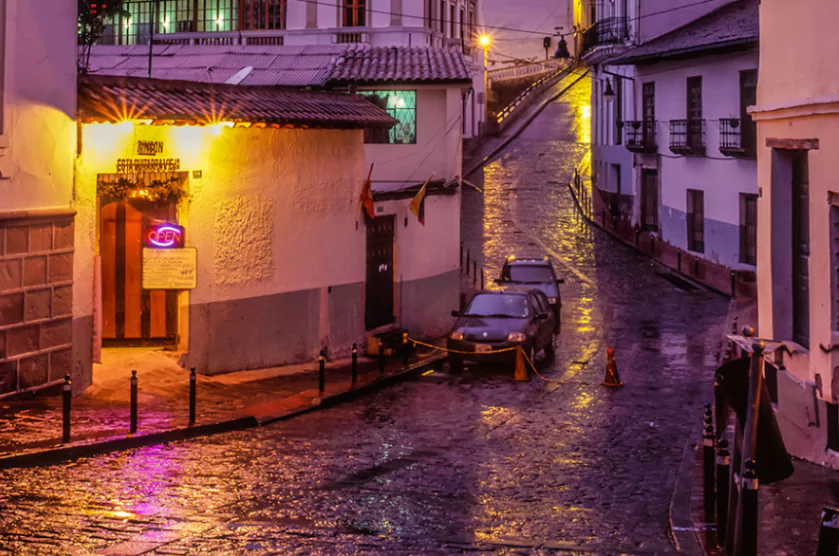
Safety
Ecuador is generally a safe country to travel, especially compared to some of its neighbors. Violent crime against tourists is rare – the biggest risk is usually petty theft or pickpocketing in crowded areas. Still, it’s important to stay aware of your surroundings.
- In big cities like Quito, Guayaquil, and popular tourist towns, keep an eye on your belongings.
- Common-sense precautions go a long way: use the hotel safe for passports and excess cash, don’t flash expensive jewelry or electronics openly, and be cautious in bus terminals or markets where jostling crowds are prime pickpocket territory.
At night, stick to well-lit busy areas; if your hotel is in a sketchy neighborhood, take a taxi to the door. Certain parts of cities (for example, some areas of southern Guayaquil or Quito’s old town late at night when it’s empty) are best avoided when alone – ask locals or hotel staff if you’re unsure. In rural villages and small towns, crime is very low and you’ll likely feel quite safe, but the usual advice to not leave things unattended still applies.
- Ecuadorian police are generally helpful to tourists. There is a special tourism police unit in places like Quito and they may assist if you encounter any trouble.
- The emergency number is 911 nationwide for police, fire, or medical emergencies (and they have some English-speaking operators).
Hiking and Outdoor Safety
One particular safety point: if you plan on hiking or high-altitude trekking (like summiting Cotopaxi or going into remote national parks), consider hiring a guide or going with others – people have gotten lost or injured in the mountains when venturing alone. Also, watch out for strong ocean currents on some beaches (always heed local flags/warnings before swimming, especially on the Pacific coast).
Health
No special vaccinations are required by law to enter Ecuador (unless you’re arriving from a country with yellow fever). However, it’s recommended to be up to date on routine vaccines (MMR, tetanus, etc.) and consider Hepatitis A and Typhoid vaccines since you’ll be eating unfamiliar foods.
- If you plan to visit the Amazon basin or jungle areas below 1500m, a Yellow Fever vaccine is recommended (and sometimes required for entry into other countries if you’ve been in the Amazon).
- Some parts of the Amazon region also have malaria and dengue fever. Malaria risk is low in most tourist spots, but if you’re going deep into the rainforest or to the northwest coastal jungles, talk to your doctor about anti-malarial pills.
- Dengue is transmitted by mosquitoes too – there’s no vaccine for tourists, so prevention is key (use repellent, wear long sleeves/pants in buggy areas).
Altitude Sickness
At high elevations, the biggest health concern is altitude sickness. Quito sits at 2,850 m (9,350 ft); upon arrival you might feel short of breath, tired, or have a mild headache.
- Take it easy your first day – stay hydrated, avoid heavy exertion and alcohol until you acclimate.
- Over a couple of days most people adjust, but if you plan to go even higher (like hiking around 4,000 m or climbing volcanoes), give yourself a few days at moderate altitude first.
- Coca tea, a traditional remedy for altitude in the Andes, is commonly offered in highland areas – it can help with symptoms (just avoid drinking it right before a drug test, since coca leaves are the raw ingredient of cocaine and can cause a false positive).
- Over-the-counter medicine for altitude (like soroche pills in Ecuador, which often contain ibuprofen and caffeine) can also help.
Food and Water
Tap water is not safe to drink in most of Ecuador. Always drink bottled or filtered water; many hotels provide a jug of purified water for refilling bottles. Brush your teeth with bottled water if you want to be extra careful, especially if you have a sensitive stomach.
- Street food in Ecuador can be delicious (try empanadas, choclos, and local fruit juices), but exercise usual caution: make sure foods are cooked thoroughly and served hot.
- Avoid raw unpeeled fruits/veggies unless you can wash them yourself or they are from a trusted place. In many areas, they wash produce in tap water which your system might not be used to.
- Most travelers enjoy Ecuador’s cuisine without issues – just ease in if you’re not used to Latin American food. It’s not a bad idea to carry anti-diarrheal medicine just in case.
Sun Protection
Sun protection is crucial – the equatorial sun is strong at all altitudes. Even on cloudy days or in the highlands where the air feels cool, you can get a serious sunburn.
- Wear sunscreen (SPF 30+), sunglasses, and a hat when out in the sun, especially from 10am to 3pm.
- If you’re trekking at high altitudes or visiting the beach, the UV exposure is intense.
Travel Insurance and Medical Care
Lastly, consider travel insurance that covers medical emergencies and trip interruptions. Good insurance will cover things like a hospital visit or emergency evacuation (in the very unlikely event you need to be airlifted due to altitude sickness or a jungle mishap).
In remote areas, care is basic – you’d want to get transported to a city for serious issues.
Medical care in cities like Quito, Cuenca, Guayaquil is quite decent, with private hospitals offering good care (at costs lower than North America but still expensive without insurance).
Accommodation Options in Ecuador
Ecuador offers a wide range of accommodations to fit every budget. In major tourist destinations, you’ll find everything from backpacker hostels and guesthouses to boutique hotels and luxury resorts.
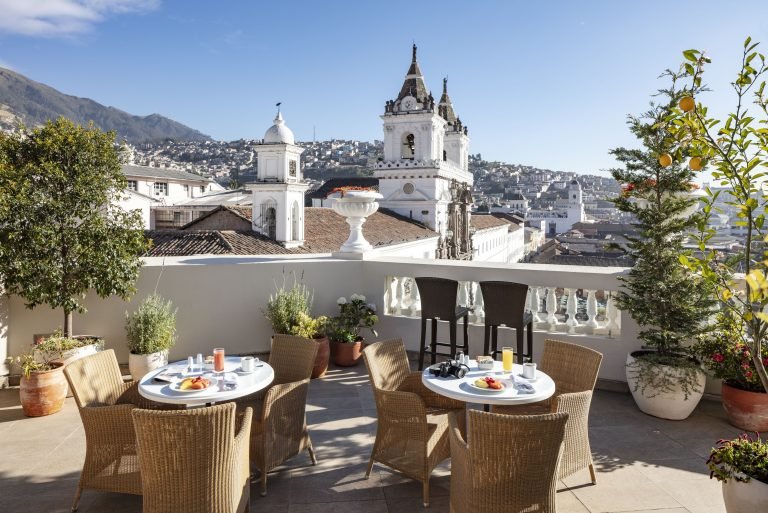
- Hostels (hospedajes) are plentiful in Quito, Baños, Montañita, Cuenca, etc., often in the $10–$20 per night range for a dorm bed or budget private room. They’re great for meeting other travelers and often can help arrange tours.
- Mid-range hotels and B&Bs ($30–$70/night) will give you more privacy and often include breakfast. You can find charming historic hotels especially in colonial areas of Quito and Cuenca.
- High-end hotels and resorts ($100 and up) exist too – Quito and Guayaquil have international chains (JW Marriott, Hilton, etc.), and there are beautiful eco-lodges in the Amazon and upscale hacienda hotels in the highlands.
If you’re visiting the Galápagos, note that accommodation there is pricier – even simple hotels may be $50+ a night due to the remote location. Many people opt for multi-day cruise packages in the Galápagos which include accommodation on the ship.
In Quito, because many travelers start there, you’ll be spoiled for choice. Whether you want a budget hostel in the Mariscal area or a luxury hotel in the modern part of town, you can find it. To help narrow it down, here’s a useful resource on the best hotels in Quito, Ecuador – highlighting top picks for various budgets and styles, so you can find a comfortable home base in the capital before heading out to explore the rest of the country. (Book ahead during peak season or festival times, as places can fill up.)
Outside the big cities, consider staying in haciendas or lodges for a unique experience. For example, in Cotopaxi or Otavalo, historic hacienda estates have been converted into guesthouses – you’ll sleep in cozy rooms by a fireplace and maybe have views of volcanoes out your window. In the Amazon, eco-lodges offer packages that include meals and guided excursions, giving you an immersive jungle experience.
Wherever you stay, hospitality is generally warm and welcoming. Smaller family-run places may not have English-speaking staff, but they will do their best to accommodate you. It’s polite to greet the proprietor or front desk with a friendly “buenos días” and ask how they are – personal interaction is valued. And when you leave, a sincere “gracias” and maybe a note in the guestbook will be appreciated.
Cultural Insights of Ecuador
One of the joys of visiting Ecuador is experiencing its rich culture – a blend of indigenous heritage, Spanish colonial influence, and unique local traditions. From highland markets brimming with handicrafts to vibrant festivals and colonial art, Ecuador’s cultural tapestry is colorful and diverse. Here are some insights into the culture that will enhance your travels.
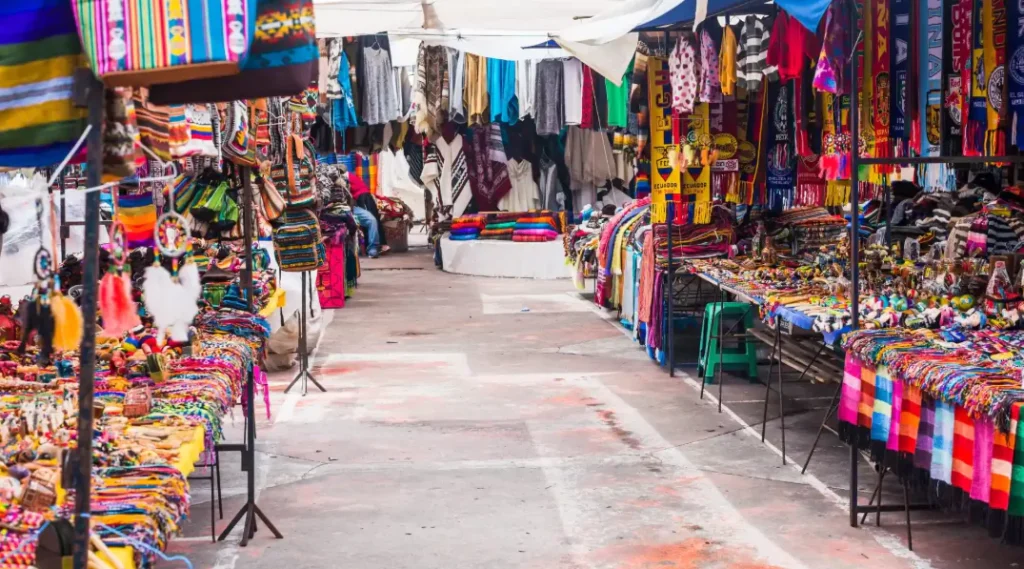
Indigenous Culture and Traditions
Ecuador is home to a strong indigenous culture, with many different ethnic groups, especially in the Andes and the Amazon. The largest group are the Kichwa (Quechua) people of the highlands. In towns like Otavalo, Kichwa traditions are very much alive – from the Quechua language (known locally as Kichwa) heard in the markets to the distinctive clothing (Otavaleño women, for example, often wear embroidered blouses, layered gold necklaces, and shawls; men may braid their hair and wear ponchos).
Otavalo Market and Surrounding Villages
The Otavalo market is not just a shopping spot but a window into the indigenous world. It’s a great place to appreciate Otavalo’s Kichwa culture, known for its entrepreneurship and preservation of ancestral crafts. You might also visit indigenous villages around Otavalo (like Peguche or Ilumán) to see artisans at work – weaving on traditional looms or carving wooden musical instruments.
Highland Markets Beyond Otavalo
Beyond Otavalo, many highland towns have regular markets where indigenous communities trade produce and goods (Saquisilí market on Thursdays, for example, or Zumbahua near Quilotoa). If your timing aligns, these are wonderful, less touristy experiences.
- Always ask before taking photos of people – some indigenous folks are not comfortable being photographed, while others don’t mind.
- A small purchase or a friendly conversation can go a long way to making a connection.
Amazonian Indigenous Groups
In the Amazon, indigenous groups like the Huaorani, Kichwa (there as well but with different customs), and Shuar have their own distinct cultures. Some community-run lodges allow visits to indigenous villages where you can learn about their way of life, from hunting techniques to traditional medicine.
Traditional Festivals and Celebrations
Traditions and festivals are a vibrant part of indigenous culture. One of the most important Andean indigenous celebrations is Inti Raymi, the Festival of the Sun, which coincides with the June solstice. During Inti Raymi, communities give thanks for the harvest. It’s celebrated with music, dance, and ritual – notably in Otavalo and Cotacachi, you’ll see days of festivities.
A key figure in these highland festivals is the Aya Huma, a dancer who wears a striking two-faced mask and represents an ancestral spirit. The Aya Huma (which means “spirit of the hills” in Kichwa) leads dances to drive away negative energies. If you’re in Ecuador in late June, experiencing an Inti Raymi celebration in an indigenous town is a memorable insight into pre-Hispanic tradition blended with local Catholic influences (many Inti Raymi events now honor St. John the Baptist as well, due to colonial era syncretism – hence they are sometimes called “San Juan” festivals).
- Other notable festivals with indigenous roots include:
- The Yamor festival in Otavalo (early September, thanking Mother Earth for corn harvest).
- Day of the Dead (Día de los Difuntos) on November 2, when families visit cemeteries with offerings and partake in a special meal of colada morada (a purple corn fruit drink) and guaguas de pan (bread shaped like babies).
Catholic Traditions in Ecuador
Catholic traditions, introduced by the Spanish, also play a big role in Ecuadorian culture. Holy Week (Semana Santa) sees solemn processions, especially the famous “Jesus del Gran Poder” procession in Quito where purple-robed penitents walk through the streets. In December, nearly every city and town has events for Fiestas de Quito (Quito’s foundation day, Dec 6) or the Navidad (Christmas) season – expect nightly novenas, carol singing, and vibrant Christmas Eve masses. No matter when you go, there’s likely a fiesta happening somewhere – Ecuadorians love to celebrate their towns’ patron saints and historic anniversaries with fireworks, music, and food.
Ecuador Art, Architecture & The Quito School
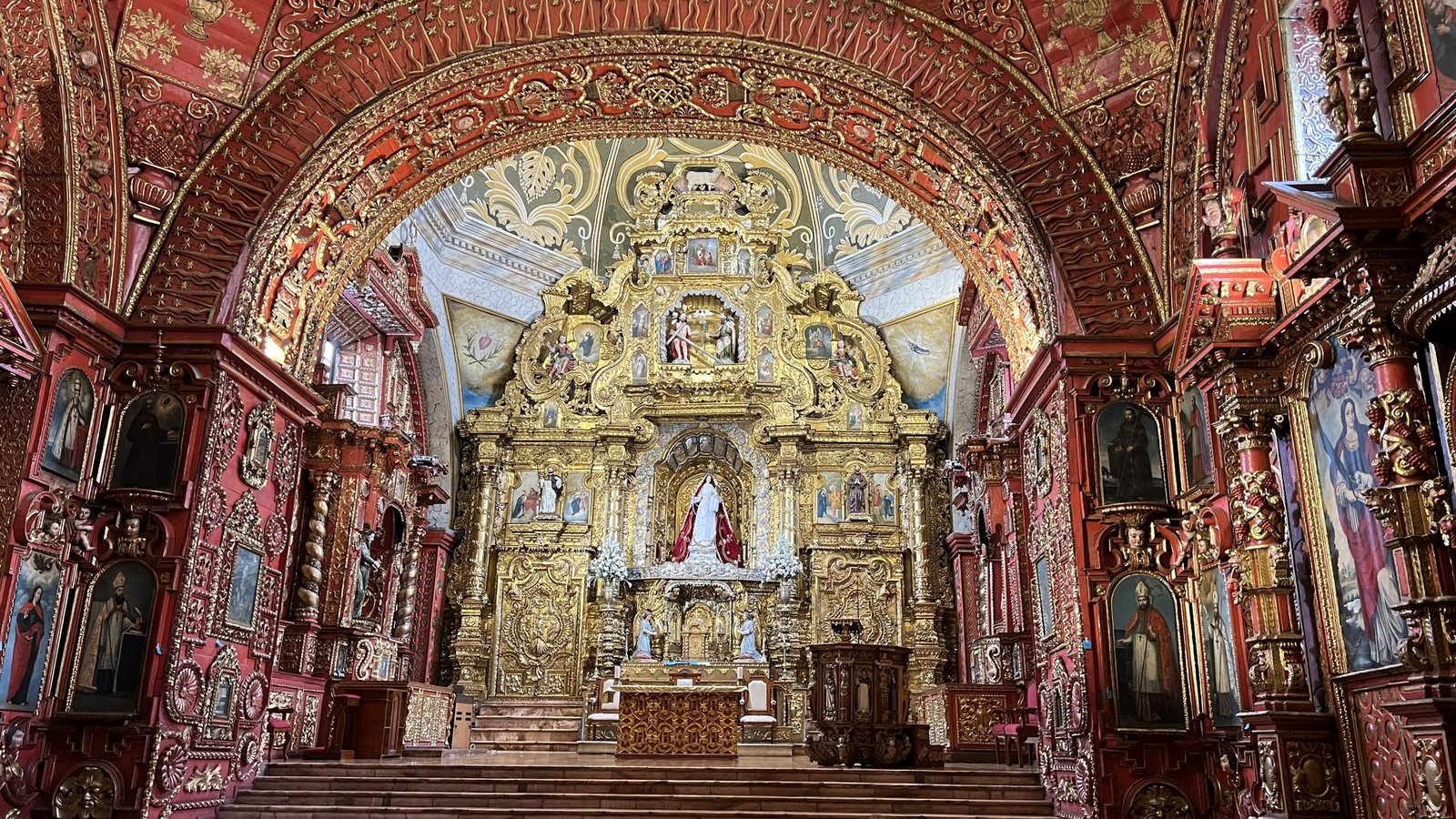
Artistic expression in Ecuador spans from ancient times to contemporary, and one cannot miss the influence of the Quito School of Art when exploring the country’s churches and museums. The “Quito School” (Escuela Quiteña) refers to a renowned artistic tradition that flourished in Quito during the 16th to 18th centuries. Indigenous and mestizo artisans, taught by Spanish missionaries, developed a distinctive style of religious art – producing exquisite wood carvings, sculptures, and paintings for churches. What’s special is how they blended European Baroque styles with local flair; for example, statues of saints were carved by indigenous artists like Bernardo de Legarda and given lifelike detail and even components like glass eyes and real hair.
- If you visit the Church of La Compañía in Quito (a must-see, often considered one of the most beautiful churches in Latin America), you’ll see the stunning altars covered in gold leaf – much of this work was done by Quito School artists.
The Quito School of Art also produced paintings with vivid colors and often used indigenous models as angels or biblical figures, subtly incorporating their own reality into Christian art. For those interested in art, Quito has several museums showcasing this heritage, such as the Museo Alberto Mena Caamaño (with colonial art pieces) or the Fray Pedro Gocial Museum attached to the San Francisco Church, which houses many Quito School artworks.
Artistic Heritage in Cuenca and Smaller Towns
Outside Quito, the influence spread – the city of Cuenca also has its own artistic heritage, and you can find beautiful paintings and carvings in Cuenca’s old churches and the Museo de las Conceptas. Even small towns might surprise you: in the church at Guano (near Riobamba), there’s a famed Last Supper painting where the artist cheekily included cuy (guinea pig) and local foods on Jesus’s table!
Modern Ecuadorian Art: Oswaldo Guayasamín
In more modern times, Ecuador has produced notable artists like Oswaldo Guayasamín, whose powerful paintings addressed social issues and indigenous identity. The Guayasamín Museum and Chapel of Man in Quito is a highlight for art lovers, showcasing his dramatic, Picasso-esque works.
Colonial and Historic Architecture
Architecture is another cultural delight. Strolling through Quito’s Old Town, you’ll encounter splendid colonial architecture – whitewashed houses with wooden balconies, Baroque churches, and open plazas. Quito was one of the first cities declared a UNESCO World Heritage Site (in 1978, alongside Kraków) for its well-preserved historic core.
- Notable sites include:
- The San Francisco Church and Plaza (dating to 16th century)
- The Basilica del Voto Nacional (a neo-Gothic cathedral where gargoyles are native animals like iguanas and turtles)
- Plaza Grande with the Presidential Palace
Cuenca, also UNESCO-listed, offers a more relaxed colonial ambiance with its blue-domed Cathedral of the Immaculate Conception and riverside colonial buildings.
Contemporary Culture: Street Art, Music, and Dance
In terms of contemporary culture, cities like Quito and Guayaquil have a growing urban art scene. You might notice murals and street art in certain neighborhoods (for example, the La Floresta area in Quito is known for its murals). There’s also a vibrant music and dance scene – from Andean folk music with pan flutes, to Afro-Ecuadorian marimba music from the coastal region (Esmeraldas), to modern reggaeton and salsa in clubs.
If you get a chance to see a performance of danza folklórica (folk dance), it’s a treat – dancers in bright costumes perform traditional dances that tell stories of courtship, farming, or historical events.
Ecuadorian Cuisine
A big part of experiencing Ecuador is tasting its delicious and diverse cuisine. Ecuadorian food is not as internationally famous as, say, Mexican or Peruvian, but travelers are often pleasantly surprised by how tasty and varied the dishes are across regions.
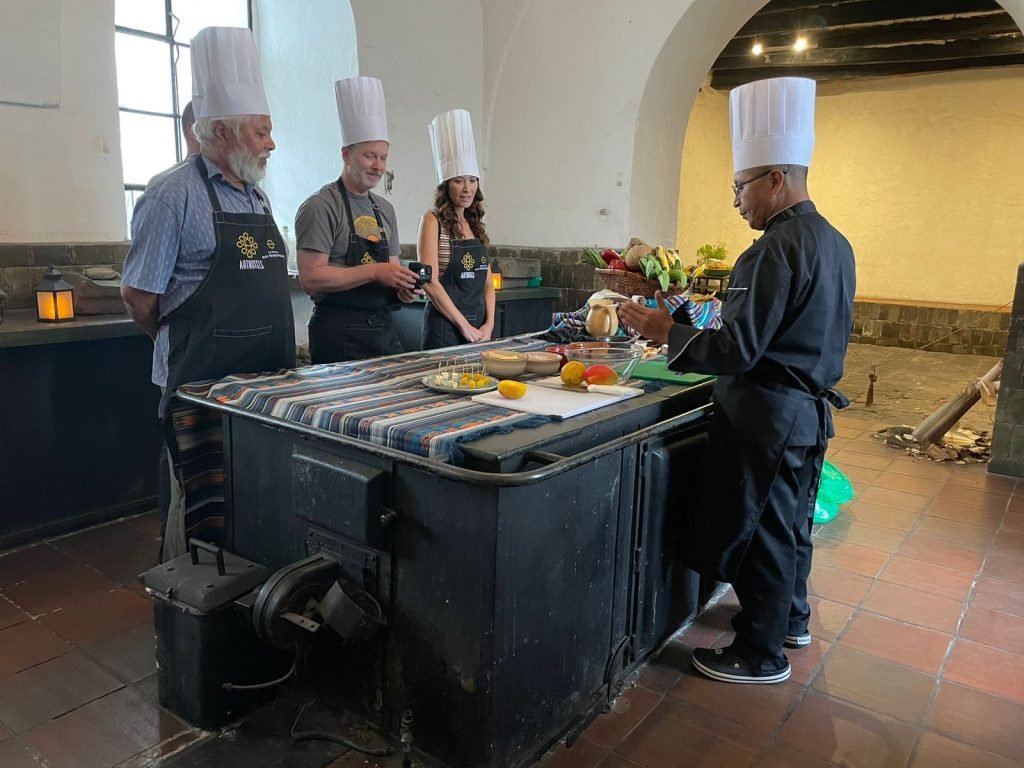
Highlands (Sierra) Cuisine
In the highlands (Sierra), meals are hearty, featuring potatoes, corn, and grains. A classic dish is locro de papa, a thick potato soup usually topped with avocado and cheese – perfect for a cool evening. You’ll also find empanadas (fried or baked turnovers) filled with cheese or meat; a popular highland version is the empanada de viento, a fluffy fried pastry with cheese inside, often sprinkled with sugar.
- And yes, one famous Andean delicacy is cuy – guinea pig. It’s typically roasted or fried and served whole. Many tourists are nervous to try cuy, but those who do say it tastes like a richer, gamey chicken. It’s more commonly eaten on special occasions by locals due to the cost. If you’re curious, you can find it in places like Cuenca or smaller Andean towns at restaurants that specialize in traditional foods.
Another highland favorite is llapingachos – cheese-stuffed potato patties, usually served with fried eggs, sausage, salad and avocado. Hornado (slow-roasted pork) and fritada (fried chunks of pork) are popular meat dishes, typically accompanied by corn (like mote, a large-kernel corn) and potatoes.
- If you visit a food market in the highlands, look for the hornado stall by spotting a whole roasted pig on the counter! They’ll carve you a plate and serve it with sides for a few dollars.
Coastal Cuisine
On the coast, the cuisine shifts to seafood and tropical produce. Don’t miss ceviche, a dish of fresh seafood marinated in lime juice. Ecuadorian ceviche is often a bit different from Peruvian – Ecuador’s version can be soupier, sometimes made with tomato sauce, and it’s commonly served with a side of popcorn or plantain chips to sprinkle in. You can get shrimp, fish, mix, or even black clams (ceviche de concha) on the coast.
- Another coastal must-try is encocado – fish or shrimp in a creamy coconut sauce, typical of the Afro-Ecuadorian communities in Esmeraldas province.
Plantains are a staple on the coast; they make patacones (fried green plantain disks), and bolones de verde (mashed green plantain dumplings often stuffed with cheese or chicharrón). In Guayaquil, a breakfast favorite is tigrillo, a scramble of ripe plantain, egg, cheese, and sometimes bacon. Arroz con menestra y carne asada (rice with stewed lentils and grilled meat) is like the coast’s “meat and potatoes” comfort food, found in many local eateries.
Amazonian Cuisine
The Amazon (Oriente) has its own specialties, often involving river fish, yuca (cassava), and heart of palm. One interesting Amazon dish is maito, fish wrapped in bijao leaves and grilled over a fire.
- Adventurous eaters might try chontacuros – these are plump palm weevil grubs, skewered and roasted (yes, it’s a big bug!). They’re said to be very nutritious; some describe the taste like bacon.
Snacks and Street Foods
Across the country, you’ll find great snacks and street foods:
- Humitas (steamed corn cakes with cheese, similar to tamales) sold at markets
- Quimbolitos, sweet sponge cakes steamed in leaf wrappers
- Choclos (grilled ears of Andean corn, often served with cheese)
- Espumillas, a guava meringue cream sold like ice cream in cones
- A huge variety of fresh fruits. Ecuador’s fruit selection is astounding – try the sweet melons, pineapples, papayas, as well as Andean fruits like babaco and taxo, and Amazonian ones like guanábana (soursop) and pitahaya (dragon fruit).
Street juice stands will whip up delicious smoothies for a couple dollars – just ensure the water/ice they use is purified.
Drinks and Beverages
When it comes to drinks, besides fruit juices, there’s coffee (Ecuador grows excellent coffee in areas like Intag and the Galápagos, though oddly much of the best is exported), and hot chocolate – a highland treat often made with local cacao and spiced with cinnamon.
- In the highlands, try a comforting cup of canelazo on a chilly evening – it’s a hot cocktail made with aguardiente (sugar cane alcohol), sugar, and cinnamon, sometimes naranjilla fruit added; it’s popular during festivals.
- Ecuador also produces world-class chocolate (cacao beans are a major export). You can visit cacao farms, especially in coastal lowlands, and taste artisanal chocolates.
- For beer lovers, there are a few local brews (Pilsener is the ubiquitous mass-market beer, but craft breweries are popping up in Quito and beyond).
And of course, hydrate with bottled water – or the ubiquitous Gatorade and Coca-Cola you’ll find even in small villages if you’re in a pinch.
Top Attractions in Ecuador
Ecuador offers an incredible range of attractions, from natural wonders to cultural gems. Here are some of the top attractions you should consider adding to your itinerary:
Quito’s Historic Center

Start in the capital’s Old Town, a UNESCO World Heritage site packed with colonial churches, monasteries, and mansions. Stroll along calle La Ronda in the evening for a romantic, lantern-lit atmosphere or visit Plaza Grande and people-watch. Don’t miss the gilded interior of La Compañía de Jesús Church – often cited as the country’s most beautiful church. For views over the city, head up to El Panecillo hill, where the Virgin of Quito statue stands. Quito’s mix of history and living culture (street vendors, musicians, daily life in old plazas) makes it a must-see.
Galápagos Islands
Arguably Ecuador’s most famous destination, the Galápagos are unique in the world. This archipelago, about 2 hours by plane from the mainland, is where Charles Darwin was inspired to formulate his theory of evolution – and it’s no wonder. Here you can walk among giant tortoises, marine iguanas, and blue-footed boobies who are totally unafraid of humans.
Whether you go on a cruise or do a land-based tour, you’ll experience otherworldly landscapes and intimate wildlife encounters. Snorkel with sea turtles and playful sea lions, hike across lava fields to see nesting albatrosses (on Española Island), and watch penguins dart through clear equatorial waters. Each island has its own character and species. The Galápagos are a national park and marine reserve, so tourism is strictly managed to protect the ecosystem. It’s a once-in-a-lifetime trip for many, and absolutely worth it if your budget allows. (Tip: book well in advance, follow all park rules, and consider visiting outside the absolute peak season for slightly lower prices.)
Cotopaxi National Park
Dominating the landscape south of Quito, Cotopaxi is one of the highest active volcanoes in the world (5,897 m / 19,347 ft) – a nearly symmetrical cone often capped with snow. The national park around it is great for day trips or overnight stays. Many travelers do a day tour from Quito to hike up to the refugio (a mountain hut at ~4,800 m) on Cotopaxi’s slopes, which offers a stunning viewpoint if the weather is clear. The park is also home to wild horses, llamas, foxes, and birds like condors.
Even if you’re not hiking Cotopaxi, you can enjoy the Andean scenery – perhaps horseback ride through the paramo (high altitude grasslands) or mountain bike down from the refuge. There are lovely lodges and haciendas around the park where you can spend a night by a fireplace with Cotopaxi visible in the morning sun. For serious mountaineers, summiting Cotopaxi with a guide is a challenging but achievable climb (best done Nov–Feb or June–Aug when conditions are good).
Cuenca
This southern highland city charms visitors with its colonial architecture and artsy vibe. Cuenca’s historic center has beautiful churches (the New Cathedral with its iconic blue domes, and the old colonial cathedral turned museum). Walk along the Tomebamba River, which separates the old town from the newer areas – the riverside is lined with gardens and colonial-era buildings.
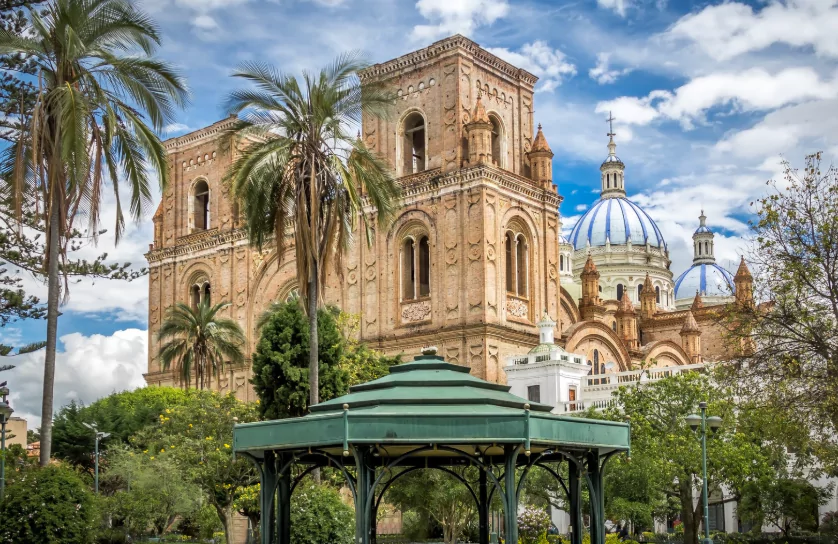
Cuenca is also known for its many artisans: Panama hats (which, despite the name, originated in Ecuador) are made here – you can tour a hat workshop like Homero Ortega’s to see the process. The city’s laid-back atmosphere, cooler climate, and many cafes and galleries endear it to travelers (and a large expat community). Nearby, you can visit Ingapirca, the largest Inca ruins in Ecuador, about 2 hours from Cuenca – a significant archaeological site with a sun temple.
Baños de Agua Santa
Often just called Baños, this town is an adventure hub on the edge of the highlands and Amazon basin. It’s famous for its hot springs (hence the name Baños) and for adrenaline activities. You can go whitewater rafting, canyoning down waterfalls, bungee jumping off bridges, mountain biking on the “Route of the Waterfalls,” and swing off the “Swing at the End of the World” (a popular Instagram spot at a treehouse overlooking Tungurahua Volcano).
Even if you’re not into extreme sports, Baños’ setting is gorgeous – lush green hills and waterfalls all around. Relaxing in a thermal bath with views of a waterfall is a nice way to end a day here. Baños is also a gateway to the Amazon region – from here you can continue to Puyo and deeper into the jungle.
Otavalo & Surroundings
We mentioned Otavalo’s famous market in the cultural section, but it’s also a top attraction. The Saturday market is biggest (sprawling through the streets – go early for the animal market on the outskirts where locals trade livestock), but the handicraft market in Plaza de los Ponchos is active daily. Shop for woven textiles, ponchos, paintings, jewelry, and more.
Even if you’re not buying, it’s a feast for the eyes. Around Otavalo, you can visit Laguna Cuicocha, a beautiful crater lake with a hiking trail around it, or the Peguche Waterfall which is a short hike from town and considered a sacred site by the indigenous community (especially during Inti Raymi).
The Amazon Rainforest
About half of Ecuador lies in the Amazon basin (locally called “El Oriente”), and it’s a biodiverse wonderland. For a true jungle experience, consider a trip to Cuyabeno Wildlife Reserve or Yasuni National Park. Typically, you’d take a short flight from Quito to Coca or Lago Agrio, then a canoe ride to a remote lodge. Once there, you’ll do guided hikes and canoe excursions to spot monkeys, sloths, colorful birds like macaws and toucans, caimans (alligators) at night, and maybe even pink river dolphins.
You’ll also likely visit an indigenous community to learn about their traditions and survival skills in the rainforest. It’s a vastly different side of Ecuador from the Andes – hot, humid, and teeming with life. Even a 3-day trip will be eye-opening. Keep in mind you’ll want strong insect repellent, and expect to disconnect – Wi-Fi/cell signal is limited out there.
Beaches and Coast
Ecuador’s Pacific coast has some lovely spots if you crave sun and sand. Montañita is famous for surf and nightlife, a backpacker party town with a beautiful beach. For a more tranquil vibe, check out Puerto López, a fishing town which is the jumping-off point for Machalilla National Park – this includes Los Frailes beach, one of the most pristine beaches in the country, and Isla de la Plata (nicknamed “poor man’s Galápagos” for its blue-footed boobies and other wildlife, reachable by boat tour).
Between June and September, Puerto López is prime for whale watching, as humpback whales migrate and often breach near tour boats. Further north, Manta and Atacames are other popular beach towns, and Salinas (closer to Guayaquil) is a resort area with a boardwalk.
Mitad del Mundo (Equator Line)
Just a short drive (about 45 minutes) north of Quito, you can visit the monument at La Mitad del Mundo, which marks the location of the Earth’s equator. Here you can literally have one foot in the Northern Hemisphere and one in the Southern Hemisphere! It’s a fun photo op and the surrounding complex has shops, museums, and exhibits about the equator. However, there’s a twist: due to modern GPS, we know the actual 0°0′0″ latitude line is a few hundred meters away from the monument.
At the nearby Intiñan Museum, they claim to have the true equatorial line, and they offer quirky demonstrations (like balancing an egg on a nail, and water going down a drain clockwise vs counterclockwise on either side of the line – though these “Coriolis effect” demos are more gimmick than science). Regardless, it’s a worthwhile half-day trip. You’ll learn a bit about indigenous cultures (the museum also has exhibits on Amazon tribes) and the science of geodesy. Plus, how often can you say you straddled the equator? The site is easily reached by tour, taxi, or even public bus from Quito. Standing at the true equator line in Ecuador is one of those bucket-list cross-offs for many.
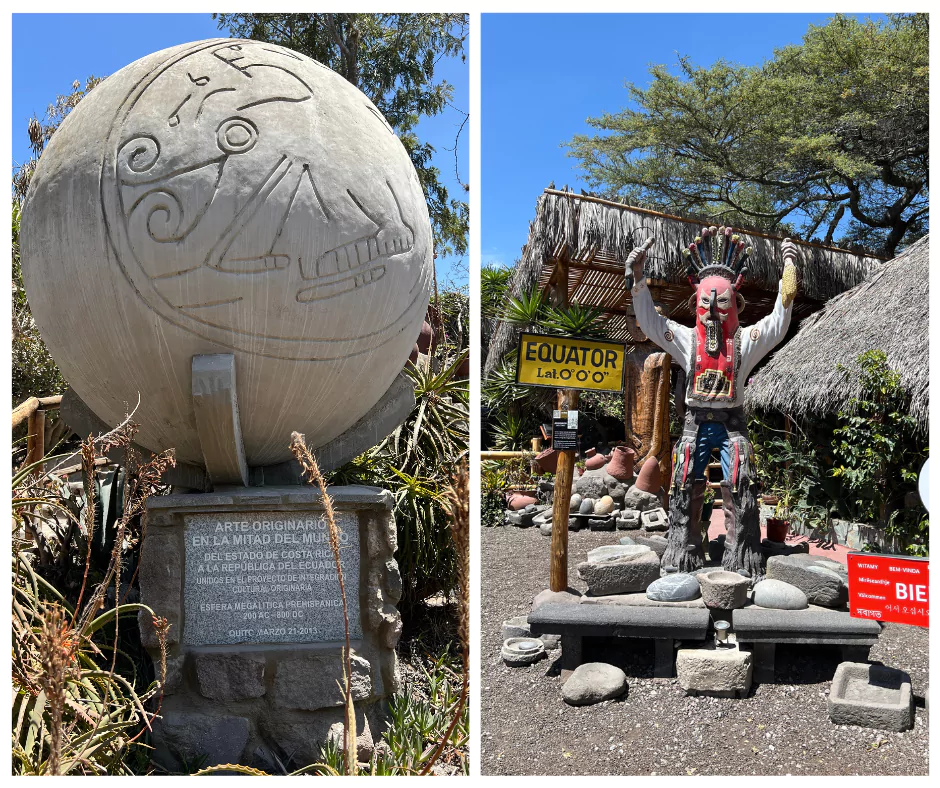
Of course, there are many more fantastic places (Laguna Quilotoa’s crater lake hike, Mindo cloud forest for birdwatching and chocolate tours, the train ride at the Devil’s Nose, etc.), but the ones above are some of the top hits not to be missed if time allows.
Unique Experiences in Ecuador
Beyond the typical sightseeing, Ecuador offers plenty of unique experiences that can make your trip truly special. Here are a few ideas for memorable activities and offbeat adventures:
Adventure in the Andes
The highlands are an adventure playground. One unforgettable option is staying at a historic hacienda and horseback riding in Ecuador through the stunning Andes. Picture yourself riding across rolling grasslands with snow-capped volcanoes in the background, it’s like stepping into a postcard. Many haciendas around Cotopaxi or Imbabura offer horseback excursions, even for novices.
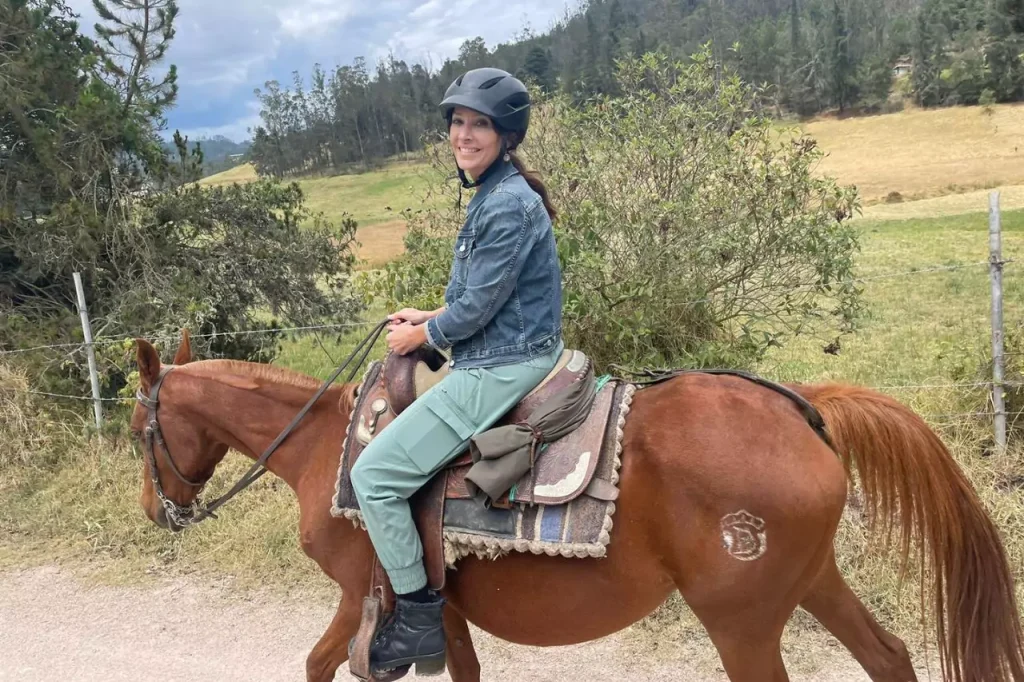
It’s a fantastic way to experience the landscape and local cowboy (chagra) culture. If horses aren’t your thing, try a guided two-day trek on the Quilotoa Loop or summit a smaller peak like Imbabura. Mountain biking down volcano slopes or ice climbing Chimborazo—Ecuador’s tallest mountain—are other thrills for adventure seekers.
Amazon Wildlife Night Walk
Spend a night in the Amazon and take a guided night walk in the jungle. As dusk falls, the rainforest comes alive with sounds. With a flashlight in hand, follow an indigenous guide and see the creatures of the night – you might spot caimans in the river shallows, tarantulas the size of your hand on tree trunks, luminescent fungus on the forest floor, or hear the calls of distant howler monkeys. It’s a bit spooky and absolutely exhilarating to be in the pitch-dark jungle, under a canopy of millions of stars, truly feeling the pulse of the rainforest. It gives you a deeper appreciation of the Amazon’s biodiversity. Many lodges in Cuyabeno or Yasuni include a night hike as part of their itinerary.
Soak in Hot Springs
After all your adventures, nothing beats relaxing in natural hot springs. Ecuador, being volcanic, has several geothermal hot springs. The most famous is Termas de Papallacta, high in the Andes about 2 hours from Quito. Imagine soaking in warm pools surrounded by mountain cloud forest, with the cool alpine air and maybe a light mist rolling in. Papallacta has various pools of different temperatures, and even some private pools if you stay overnight at their spa resort. Closer to Quito, there are also the Oyacachi hot springs, or you can visit Baños (as mentioned, which has public thermal baths fed by hot springs – try the ones by the waterfall in town). These hot springs not only are relaxing but are also part of local weekend routines for Ecuadorians, so you might share a pool with families and chat with friendly locals.
Explore a Rose Plantation
For an unusual travel experience, visit a rose farm in Ecuador—the Rose Capital of the World. Ecuador produces some of the largest, most beautiful roses exported globally. High altitude, equatorial sunlight, and rich volcanic soil combine to grow vibrant, long-stemmed roses that brighten bouquets in the US, Europe, and beyond.
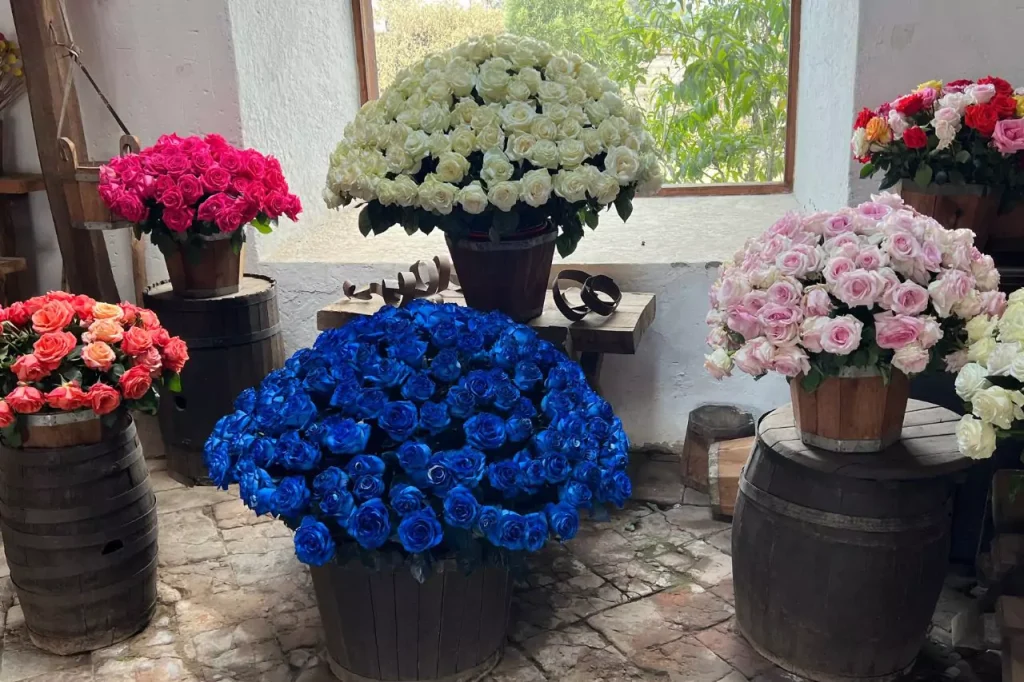
Several rose haciendas near Cayambe or Latacunga offer tours through enormous greenhouses filled with roses stretching as far as the eye can see. Enjoy this surprisingly photogenic and fragrant outing as you learn how Ecuadorians grow, harvest, and carefully package roses for shipment. Some farms even invite you to create your own bouquet to take home.
If you love flowers, don’t miss this unique activity. And even if visiting a farm isn’t possible, at least explore the stunning flower markets in cities like Quito. Visit the Mercado de Flores near San Francisco Plaza, bursting with color each morning, where you can buy roses at incredibly affordable prices (just a few dollars per dozen).
Stopping to literally “smell the roses” reminds you of Ecuador’s special role in the global flower industry and introduces a charming side of its economy.
Chocolate and Coffee Tours
Ecuador is famous for cacao – the beans that make chocolate – and there are some great tour opportunities to taste and learn. In the cloud forest town of Mindo, you can tour artisanal chocolate factories like El Quetzal to see how cacao becomes chocolate, with plenty of tasting along the way (fresh cacao fruit, roasted beans, and of course the final product).

Similarly, coffee lovers can visit small coffee fincas in places like Intag (north of Quito) or explore coffee production in the Galápagos (yes, coffee grows on Santa Cruz Island and you can visit plantations there). Sipping a cup of locally grown coffee or hot chocolate on a cool evening, knowing exactly where those beans came from, is a satisfying experience for the taste buds and the mind.
Community Tourism & Local Workshops
One of the best ways to have an authentic experience is through community-based tourism. Various indigenous communities across Ecuador welcome visitors for homestays or day visits, where you can learn about their lifestyle and crafts. For instance, in the highlands, you might stay with a family in a village, help milk cows in the morning, learn to cook a traditional meal, or take part in a ritual or music and dance. In the Amazon, community lodges run by indigenous groups offer cultural immersion, like learning to use a blowgun or make cassava bread. By doing this, you not only gain a deeper understanding of local culture but also directly support those communities.
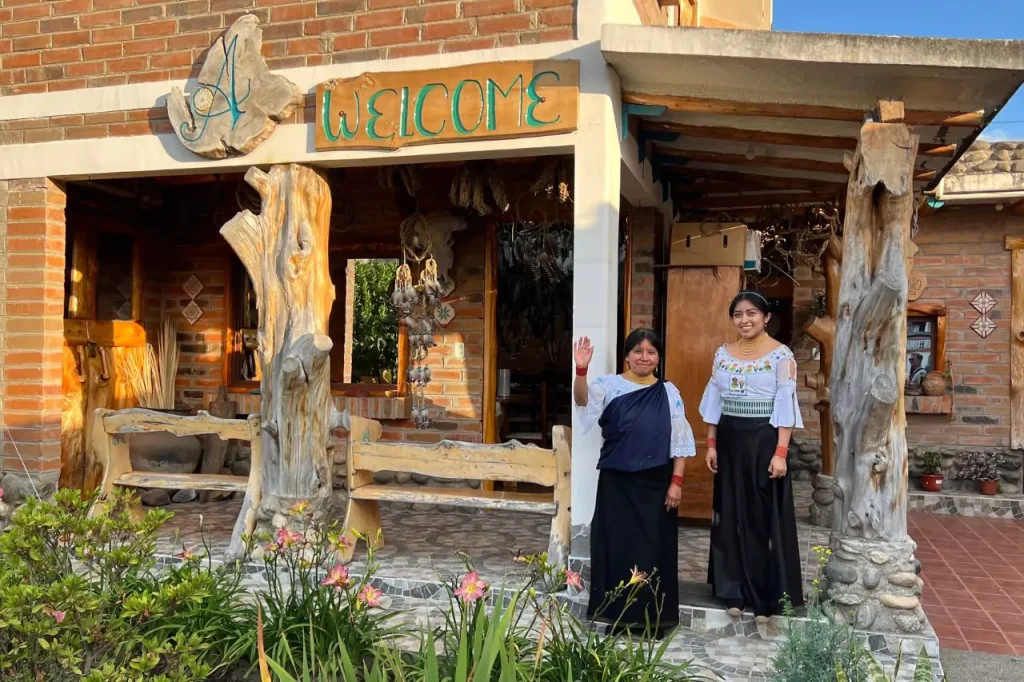
Ecuador has an initiative to foster microentrepreneurship in tourism, empowering local artisans and guides to benefit from visitors. You can be a part of that by choosing tours that involve locals or buying your souvenirs straight from the artisans. For example, you can visit workshops of guitar makers in San Bartolomé (near Cuenca) or tagua nut carving artisans on the coast. The design tourism article on Ecuador microentrepreneurship showcases how supporting small local businesses – whether it’s buying a woven shawl from the weaver herself or visiting a family-run cacao farm – leads to more meaningful travel experiences and helps preserve cultural traditions. It’s a win-win: you get a one-of-a-kind experience and your money goes directly to the community.
Wildlife Encounters on Land and Sea
We’ve talked about Galápagos and the Amazon, but even on mainland Ecuador, there are cool wildlife experiences. If you love birds, Ecuador is a birdwatcher’s paradise with over 1,600 species. Consider a trip to the Mindo cloud forest for a chance to see hummingbirds (dozens of species whizzing around feeders), toucans, and the dazzling Andean cock-of-the-rock doing its mating dance at dawn.
On the coast, you can often see Humpback whales in season (June-September) – Puerto López is the go-to for whale watching tours, where these giants sometimes breach near the boats. Off the coast of Salinas or Ayangue, you can even dive or snorkel and potentially spot sea turtles and reef fish (the water is cooler, a wetsuit is needed). For something unusual, head to El Cajas National Park near Cuenca – a high-altitude park with hundreds of lakes and wild llamas and alpacas roaming around (not to mention it’s eerily beautiful for hiking). Whether you’re in cloud forest, páramo, ocean, or jungle, keep an eye out for Ecuador’s fauna.
As you can see, Ecuador is more than just sightseeing – it’s about experiences: tasting, touching, and trying things that you might never have the chance to elsewhere. Whether you’re soaking in thermal waters under the stars, straddling the equator, or learning a few words of Kichwa from a new friend, it’s these experiences that often become the cherished memories of your trip.
Stay Connected Anywhere with Saily eSIM
Traveling soon? Skip the hassle of buying local SIM cards and enjoy instant connectivity with Saily eSIM.
With Saily, you can:
- Activate mobile data in minutes—no physical SIM needed.
- Choose affordable plans in over 150 countries.
- Keep your WhatsApp, contacts, and number without switching.

Whether you’re exploring cities or remote getaways, Saily makes staying online easy and affordable.
Get your Saily eSIM now and travel worry-free.
Final Tips When Traveling To Ecuador
Ecuador may not be a large country, but it truly has it all: towering mountains, exotic wildlife, rich traditions, and warm-hearted people. As a general tourist, you’ll find it relatively easy to travel around, and you don’t need luxury budgets to enjoy amazing sights. A few final things to know before you go to ecuador:
- Safety Recap: Stay alert but not anxious. Pickpocketing is probably the biggest concern in busy spots – a money belt or an anti-theft bag can give peace of mind. If visiting Guayaquil (which wasn’t covered in depth above), note that while it has some nice areas (Malecón 2000 riverside, Las Peñas neighborhood), it also has higher crime in certain districts – take taxis at night and ask locals about no-go areas.
- Packing: Bring layers (including a waterproof jacket) for variable weather, comfortable walking shoes (you’ll be on cobbled streets and dirt trails at times), sun protection, insect repellent, and any personal medications (pharmacies are common, but specific brands might differ). If you plan to do high-altitude hikes, bring some cold-weather gear (hat, gloves, fleece). For Galápagos or coast, don’t forget swimwear, snorkel gear (you can rent there too), and an underwater camera if you have one for those sea lion selfies.
- Costs: Ecuador is quite affordable compared to North America or Europe. You can get by on ~$30-50/day as a budget traveler (staying in hostels, eating at local spots, bus transport), around $50-100/day mid-range, and anything above that is if you choose more luxury or fly a lot. The big-ticket items are Galápagos trips or guided expeditions, which can run into the hundreds or thousands. Haggling is common in markets but not in formal stores or restaurants.
- Etiquette: Ecuadorians are polite and greet with a handshake or a cheek kiss (light touch of cheeks) among friends. Being punctual is not as strict as in some places (the concept of “hora Ecuatoriana” implies things might start a bit late), but try to be on time for tours or arranged meetings. It’s customary to say “buen provecho” (enjoy your meal) if you see someone eating, and to greet everyone when you enter a small shop or an elevator (a simple buenos días will do). When taking photos of people, ask permission unless they’re obviously in a public performance or something.
- Sustainability: Ecuador’s incredible nature is also fragile. When visiting national parks or the Galápagos, always follow guidelines – don’t leave trash, don’t disturb the animals or plants, stay on trails. In the Galápagos especially, rules are strict for a reason; something as small as bringing a seed on your shoe can introduce invasive species. The country has banned many single-use plastics in the Galápagos, so carrying a reusable water bottle and tote bag is a good idea. Support conservation by using authorized guides and respecting local regulations.
By now, you should feel well-prepared and excited for your journey. From knowing what to pack, when to go, how to get around, and what cultural nuances to respect, you have the essentials of what to know before you travel to Ecuador. It’s a destination that truly offers a bit of everything, and it tends to be less crowded with tourists than some other countries – meaning you’ll often have these amazing experiences almost to yourself. Ecuador is bound to leave you with unforgettable memories.









